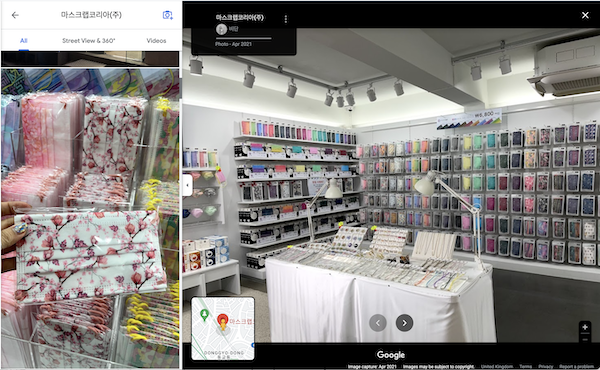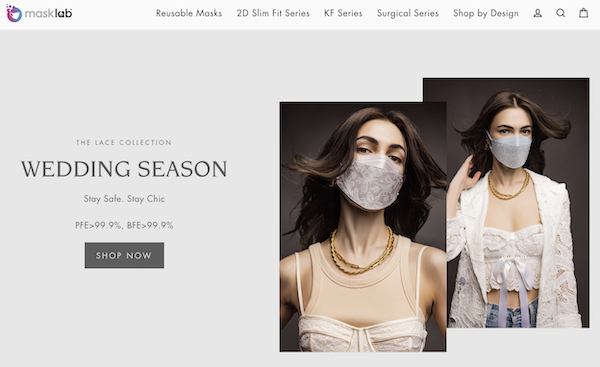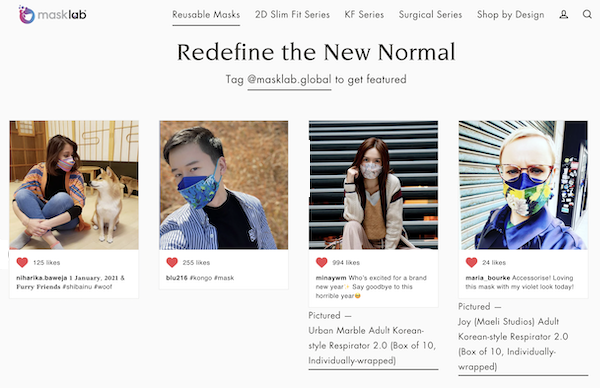By Lambert Strether of Corrente.
Readers will recall that I’ve been muttering for some time that masks (and respirators) should become fashion items. Recently:
The way we live now, in a world where the danger of airborne diseases is known to be real, “personal risk assessment” is the norm, and yet the data to make such assessments is missing or polluted, the realist will conclude that breathing has, in itself, become dangerous, and apply the precautionary principle in daily life. I personally advocate a strategy of layered protection, in which masks — filtering shared air as they do — play an important part. Not all people, of course, are realists, but there are many who take share my views. Enough, in fact, to form a large market. In this post, I will argue that the way to reach this market is to transform masking into a social norm, as it is in Asia (which, in general, did far better saving lives during the Covid pandemic than did the West). Masking can become a social norm if masks become fashion items, but that can only happen if the mask industry adopts some standards[1].
Sadly, we’re still falling short on the standards front. But I do think the idea of masks as fashion items is coming up on the zeitgeist charts, even in backward countries like our own. This tweet, for example, continues to garner quotes:
Imagine my joyful surprise at finding a company that has fashionable masks as its business model! You may also imagine my embarassment at not having served you, dear readers, by discovering the company earlier. First, I’ll look at the company (MaskLabs). Then, I’ll eat a bit of crow on why I didn’t write this post earlier.
Here is the tweet that sparked this post:
Holy moley! A bricks and mortar mask store! With people browsing colorful displays of masks! In Korea! (Here on the periphery, people ask, tentatively, if it’s possible to get a black mask (presumably because black “wipes out everything else around”)). I did check Google maps to make sure the store still existed:
Here is the interior, showing the displays:

(The jewelry tie-in is clever.) From MaskLab’s South Korean “offline store”:
마스크랩은 다양한 분야의 패션 디자이너, 예술계 Artist 및 Illustrator들과
콜레보레이션을 진행하며 각 분야의 뛰어난 예술가들의 창작성을
마스크를 통해 많은 사람들에게 전달하고 국내외 Artist들에게
또 하나의 메세지를 전달 하는 플렛폼을 제공합니다
Mask Lab works with fashion designers, art artists and illustrators in various fields.
Through collaboration, the creativity of outstanding artists in each field
Delivered to many people through masks and to domestic and foreign artists
We provide a platform to deliver another message
(Fascinating that “arttist” and “illustrator” are in English[2]. I’m not quite sure what to make of that.)
Here is part of MaskLab’s front page. There are plenty of pretty, pouting models, but this caught my eye:

Trying to break into the $70 billion wedding services market in the US is very smart (and, in this case, life-saving, since weddings are classic superspreader events), And here customers are encouraged to share their “looks” on Instagram:

Here is a potted history of MaskLab from the South China Morning Post. From 2020:
Hong Kong-based outdoor furniture maker 3i Corporation saw its exports to the US and Europe start to stagnate at the beginning of the year as the first reverberations of an economically disastrous global pandemic were felt.
To weather the downturn that was to come, the family firm with the unlikely name decided to do what dozens of others were doing: make protective face masks.
It started out with two machines in a factory in San Po Kong in April. Today it boasts six, capable of producing hundreds of thousands of masks a day, sold not only online but via three shops.
“It’s been a crazy rabbit hole that we’ve gone down” said Albert Chen, a son in the family business and CEO of its face mask spin-off, Masklab.
Companies like 3i had some advantages – outdoor furniture used non-woven fabric, also a critical material for some masks – but not everyone who jumped in had a business background.
In addition, MaskLab is careful about standards. From the US subsidiary’s FAQ:
Prior to making masks, we were a metrics-driven manufacturer who obsessed over engineering the highest quality products. Mask-making is a new endeavor for us, but we have brought the same type of fastidiousness to the craft. We believe mask producers should have the attention-to-detail on par with scientific laboratories, hence the name masklab. To stay true to the name, we have outfitted the factory with Hong Kong’s first automated filter tester so that we can verify the quality of every batch of our filters.
masklab™ products are tested by SGS, Eurofins, Nelson Labs, and STC.
MaskLab is based in Hong Kong, privately held, employs under 25 people, and has revenues under $25 million. Here is an interview on Reddit with the CEO.
Finally, here is a review of Masklab masks from BreatheSafeAir (apparently Korean-adjacent or -based). There is a purchase-link on the page, so discount if you will:
Masklab masks are a very unique and excellent idea. While I’ve seen many fashionable masks over my time running this website, I have never liked any of them as much as I’ve liked the Masklab designs.
If you want to complement your outfit, are looking for a way to stand out, or just want a mask that isn’t boring, Masklab’s KF-Series are a great choice. They are more pricey than comparable KF94 masks, and therefore they aren’t ideal for wear every day. However, they are well worth having on hand whenever you want to look great. They also make for great gifts!
The masks have been tested and surpassed the FFP2 requirements. Since the KF94 standard is based on the FFP2 standard and the form of the mask is almost identical to standard KF94 trifold/boat shape respirators, we can assume these masks perform very similarly.
Since these masks are so similar, there is a significant benefit in that you can judge whether or not they will fit you before purchasing. If you want to test the fit, go and find some cheap standard KF94s (in similar sizes) and fit-check them. If they fit, Masklab masks will too.
While offering good filtration as per EN149:2001 and ASTM F2100, Masklab also offers very breathable masks. I found that they feel more breathable than standard KF94s and closer to highly breathable masks such as those provided by AirQueen.
And the product rating for KF94s:
Pros
Awesome designs
Fit like a boat-style KF94/FFP2 mask
Certified FFP2 (in some regions)
Very breathable
ASTM F2100 Level 3 compliantCons
Quite expensive
Loose-fitting
No headband option
“Loose fitting” and “no headband option” boil down to all MaskLab masks having earloops, I’m guessing because of printing issues with vinyl straps. The author recommends “getting a cheap plastic clip or headband accessory.” Presumably the price would come down if the enormous US market could be cracked.
And now to my small plate of crow. Fortunately for my amour propre, I only missed one mention of MaskLab by a reader: Will, on April 20, 2023. (I also missed two mentions I made myself, on August 16, 2020 and October 17, 2022.) The real reason I missed the story is an overly-siloed data collection model: Basically, I read an enormous amount on Twitter, selected from an obssessively curated list of accounts, and I only added “hot mask summer” imventor @pxnzischemes, who came up with the MaskLab store in Seoul, quite recently. So I’ve been overly siloed on the scientific and political fields. But I think perhaps I’ve been overly siloed on the sites that I visit as well. I won’t be going on Instagram anytime soon unless the Tyrell Corporation fixes whatever’s gone wrong with The Zuckerberg™, but I’m seeing good stuff on Reddit too. So perhaps I need to expand my horizons a little bit (and going on Reddit may break me out of my generational silo as well).
Anyhow, that’s it on MaskLab. Anybody out there wear them?
NOTES
[1] Even if one were to concede that “Covid over” (as I do not), masking is also protective against other viruses, as well as PM2.5 particles from wildfires and pollution generally. One might also urge that airborne viruses and particles in the air are not going away, and that making masking a norm “hardens” society against The Jackpot, which will doubtless include airborne antagonists of many kinds.
[2] Interestingly, this small firm in the “Five Eyes” country of New Zealand characterizes its “fashionble masks” as “Korean-Style.”
APPENDIX
One sees K-Pop groups like Blackpink, Twice, and BTS taking the US by storm. I don’t think MaskLab is big enough to pay for product placement, but perhaps their management companies would consider encouraging their groups to wear cute, fashionable masks as a way to do a good deed for those of us trapped in the Third World.


